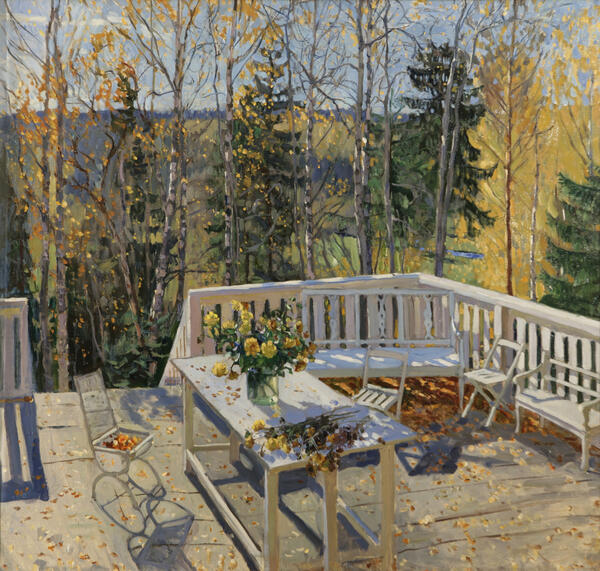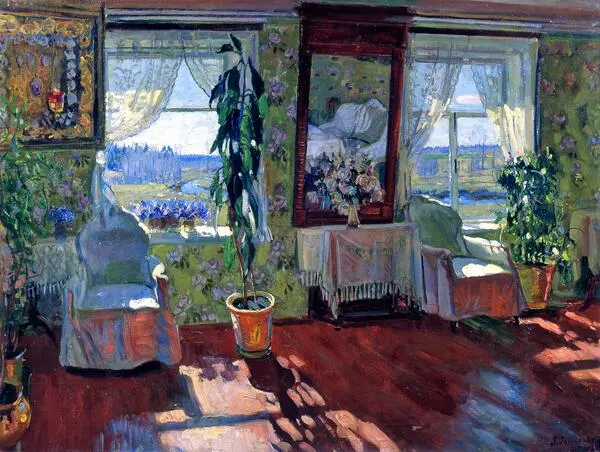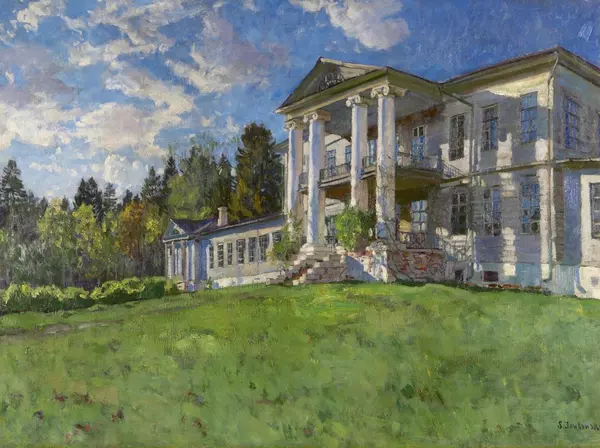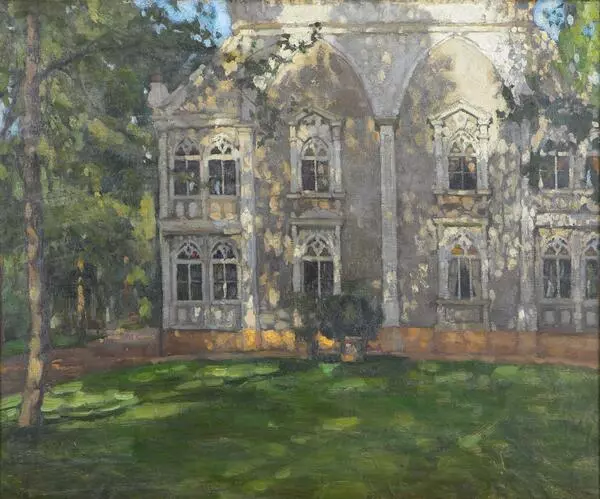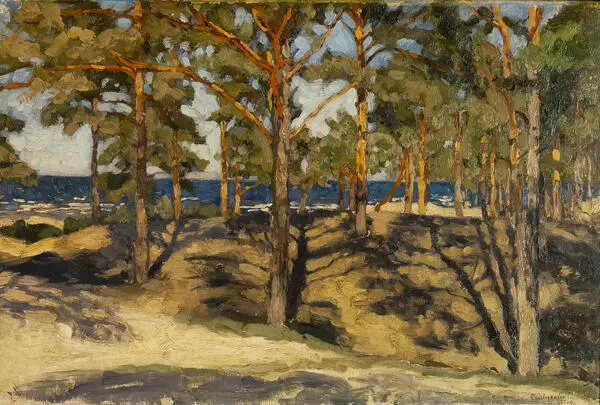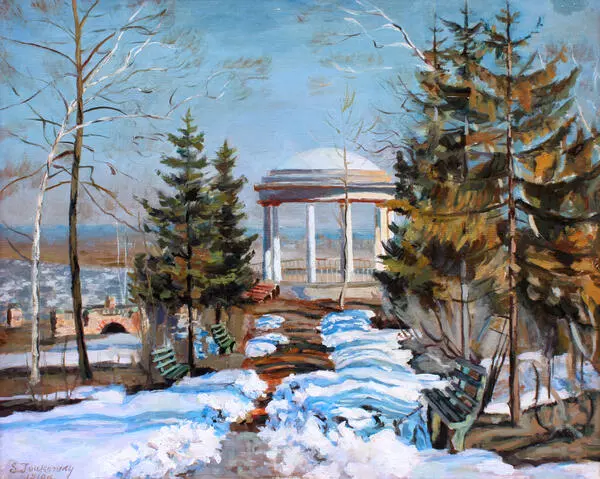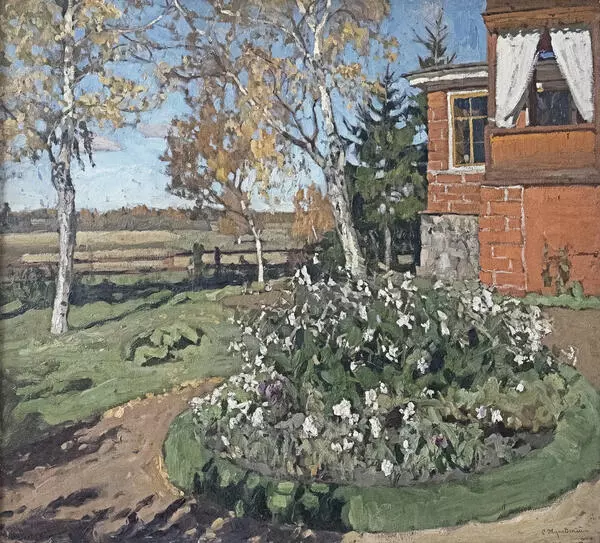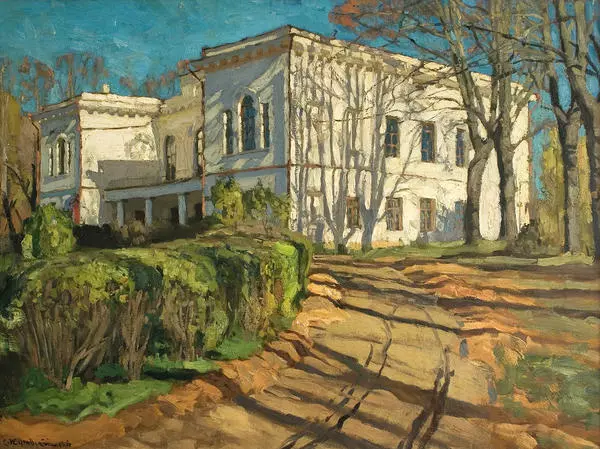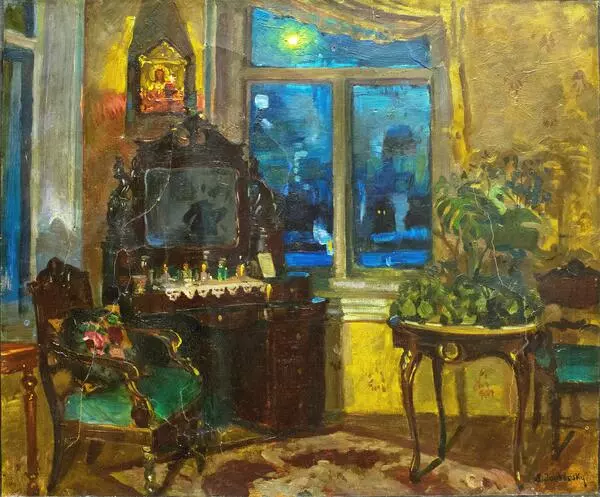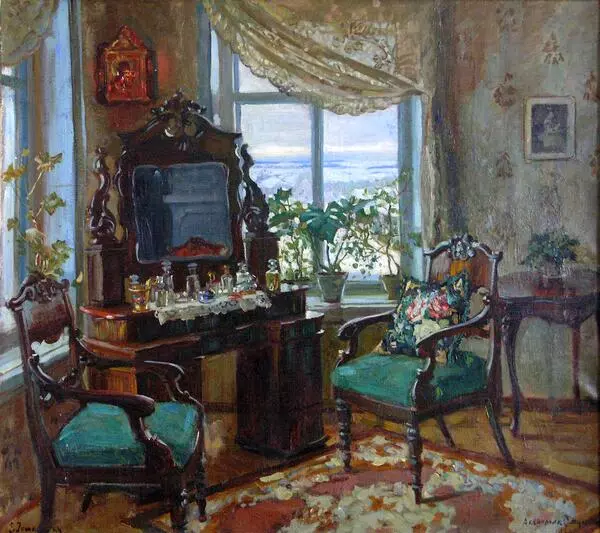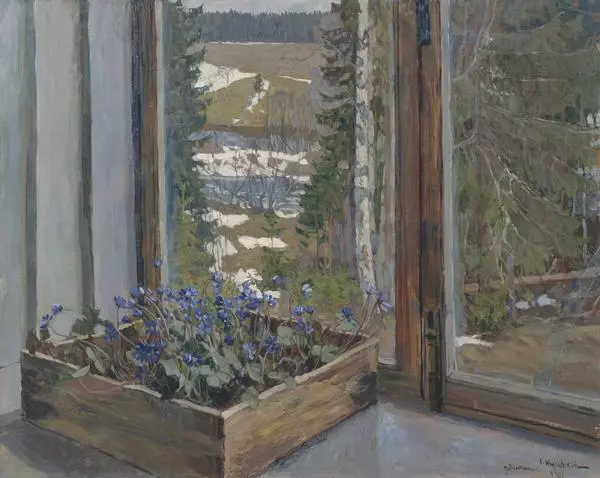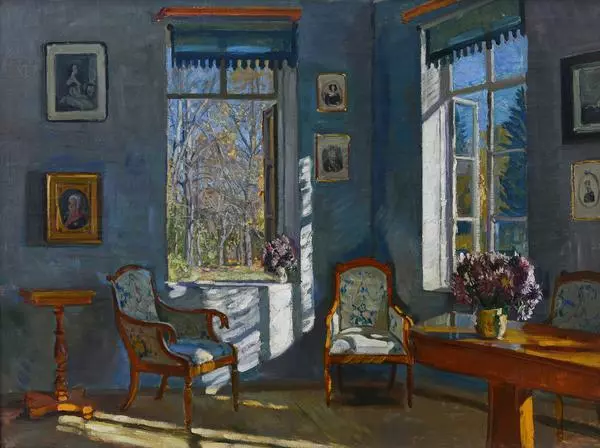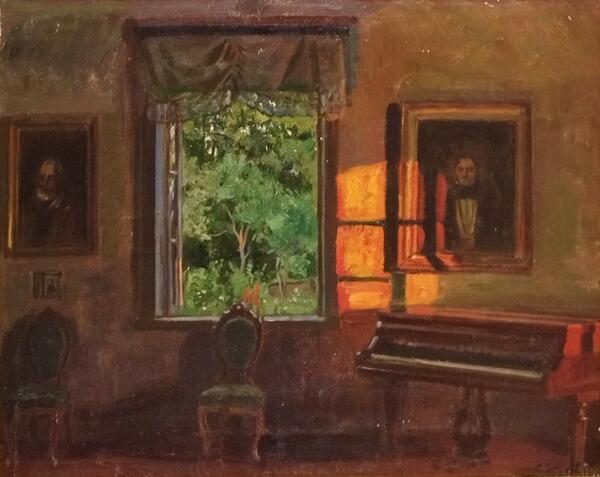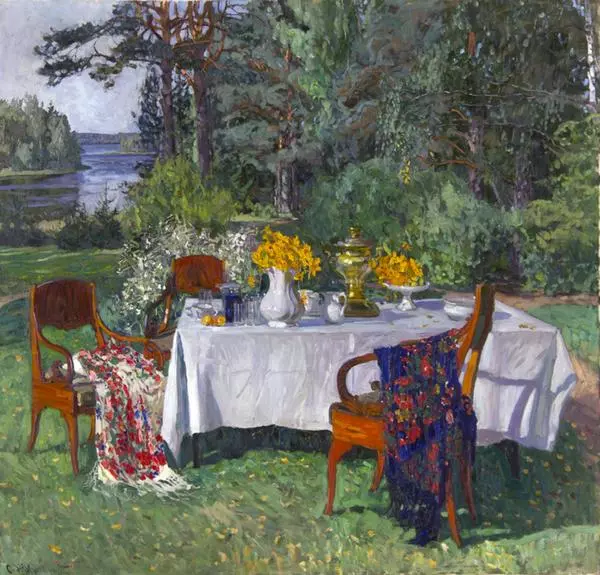Stanislav Zhukovsky is a master of Russian impressionism. The painter’s family belonged to the old noble Polish family. Taking the lessons of Isaac Levitan, Vasily Polenov, and Abram Arkhipov, Zhukovsky became a truly Russian artist in spirit. He was fascinated by significant, ringing landscapes dedicated to the change of seasons. Favorite themes of the painter are associated with the poetry of begone nests of gentlefolk. Possessing a poetic perception of nature and a subtle decorative gift, he became one of the best masters of the Russian manorial landscape — specific Russian phenomenon in Silver Age Art.
Zhukovsky wrote this scene-mood in the Tver region, where he often traveled for plein-air. The viewer immediately falls into the captivity of the canvas’s picturesque luxury the triumph of affectionate autumn light, the subtle emotion of the landscape’s sound. The artist focused on the terrace — it emphasizes the connection between man and nature. The objects depicted on the deck testify to the recently living here people who left the estate with the onset of autumn. No one removes the fallen leaves, and they are picturesquely scattered on the floor, piled up under benches and in a small children’s rocking chair.
The artist uses a fragmentary frame composition, unfolds, and brings the terrace closer to the audience to feel his presence here. Using En Plein-air painting and impressionistic writing methods, Zhukovsky subtly conveys the impact of sunlight and change of colors — in nature and objects.
The picture causes a slight sadness and, at the same time, the joy of being. The artist has chosen colorful, saturated colors — so that the viewer can see a sunny day before him, but at the same time could feel the cold autumn air.
Stanislav Zhukovsky’s works are kept in collections of Russia and other countries of the world, and the artist loved to write the same landscapes from different points of view and different angles. So, the motive of this painting was repeated by him several times. These replicas are in the State Russian Museum, the Tretyakov Gallery, and other museums. The canvas entered the Tula Museum of Fine Arts from the Ministry of Culture of the RSFSR in 1966.
Zhukovsky wrote this scene-mood in the Tver region, where he often traveled for plein-air. The viewer immediately falls into the captivity of the canvas’s picturesque luxury the triumph of affectionate autumn light, the subtle emotion of the landscape’s sound. The artist focused on the terrace — it emphasizes the connection between man and nature. The objects depicted on the deck testify to the recently living here people who left the estate with the onset of autumn. No one removes the fallen leaves, and they are picturesquely scattered on the floor, piled up under benches and in a small children’s rocking chair.
The artist uses a fragmentary frame composition, unfolds, and brings the terrace closer to the audience to feel his presence here. Using En Plein-air painting and impressionistic writing methods, Zhukovsky subtly conveys the impact of sunlight and change of colors — in nature and objects.
The picture causes a slight sadness and, at the same time, the joy of being. The artist has chosen colorful, saturated colors — so that the viewer can see a sunny day before him, but at the same time could feel the cold autumn air.
Stanislav Zhukovsky’s works are kept in collections of Russia and other countries of the world, and the artist loved to write the same landscapes from different points of view and different angles. So, the motive of this painting was repeated by him several times. These replicas are in the State Russian Museum, the Tretyakov Gallery, and other museums. The canvas entered the Tula Museum of Fine Arts from the Ministry of Culture of the RSFSR in 1966.

